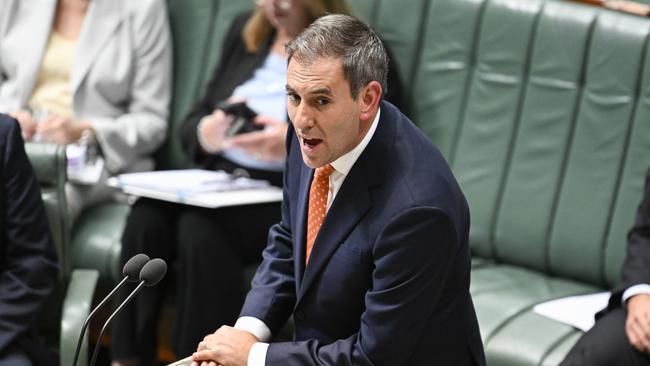Something-for-all federal budget avoids the hard discussions

But at least the budget lays bare some fiscal contradictions we will have to address sooner rather than later.
To be sure, the budget has good points. It notes Australia’s relative fiscal strengths – such as lower debt to GDP than the US, Britain, Europe or Japan.
It takes positive steps on productivity growth in areas such as restricting non-compete clauses, making good use of empirical evidence from the e61 Institute. And the budget coherently lays out the context: this is among the most challenging security and economic environment Australia has faced in at least four decades. Our leaders face hard issues that defy simple answers.
But in large part the budget sticks to the old business model: doling out more goodies for just about everyone, paid for with borrowed money. In essence, the budget has made it clear that our political system is making government larger than Australians are accustomed to, without a clear plan to pay for it.
The cash deficit for 2025-26 is estimated at $42bn, equivalent to 1.5 per cent of GDP. With off-budget spending, we are $65bn in the red, or 2.3 per cent of GDP. The deeper issue is that there is really no fiscal strategy to return the budget to balance. At least not any strategy the government or opposition will explicitly own or defend.
The implicit strategy is to keep total spending just below its current level of 27 per cent of GDP, a four-decade high outside the Covid pandemic. This will be achieved through spending restraint, maintained for a decade.
On the revenue side, the strategy implies taxes will rise – largely through bracket creep – so that in a decade revenue will hit a new historic high of 26.8 per cent of GDP. In 10 years, revenue and spending will meet again after a long separation and settle into their new life together as a higher share of the economy than historically. Budget balance will be restored in 2035-36.
The unspoken central assumption is that the 2025-26 budget will be the last of its kind. No more big spending and no more handing back of bracket creep for the next 10 years.
The political realism of that assumption is undermined by the decisions in this budget: spending is growing rapidly (6 per cent real growth in the current year) and the equivalent of bracket creep is being returned through tax cuts for the next two years.
But if we want bigger government, we have to be willing to pay for it. And not just in 10 years. If we want tax cuts, we have to be realistic about reducing government spending accordingly. We risk sleepwalking into tax rises by stealth or handcuffing future governments in terms of spending capacity. Absent an election campaign, perhaps our political leaders could better communicate these trade-offs.
Politics also influences where money is spent. Starkly, none of the signature measures in this budget is particularly targeted at low-income households. The tax cuts flow to everyone. Ditto the energy rebates. Bulk-billing incentives already target pensioners and healthcare card holders.
The budget expands them to everyone else. The cheaper medicines measure focuses on reducing the general co-payment rather than the concessional one, which is paid by those on the lowest incomes. And e61 work has shown that relieving HELP debt benefits former students who, on average, will earn more than the typical taxpayer across their lifetime.
A solid fiscal strategy is not just about how to balance the budget but how we design tax and expenditure settings to focus on the groups we most wish to help. This gets lost in the “something for everyone” pre-election stampede.
Much else could go wrong. What if, as seems likely, we need to increase defence spending substantially across the course of the next decade? Can we achieve the 1.2 per cent annual productivity growth currently factored into the medium-term fiscal numbers?
The government’s competition reforms are positive, but our work at e61 suggests productivity growth is getting harder to achieve if we keep expanding the care economy at current rates.
These issues have become more urgent. Australia enters a period of great challenge, with a fiscal position weaker than it should be, and political norms that work against a serious discussion of the necessary trade-offs.
Michael Brennan is chief executive of the e61 Institute and former chairman of the Productivity Commission.





This is the budget the government did not want. Its first choice – to have the election first and deal with fiscal challenges later – was blown away by Cyclone Alfred.